An Environmental Studies Program for a Rapidly Changing World
By BowdoinIn this spirit, the ES program is organizing a symposium this spring and inviting alumni to discuss issues at the forefront of the field: climate change and sustainability, environmental design, and environmental storytelling and communication. Questions of environmental justice will be woven into these discussions.
The symposium's thematic framework captures some of the main areas in which ES graduates are contributing. Similarly, the work of Bowdoin's ES faculty—while broad and interdisciplinary to encompass the myriad forces shaping the environment—represents themes that illuminate the program's teaching and research priorities today.
The program has faculty working in the areas of environmental justice, human and ecological impacts, climate resilience, food systems, and urban design. (Twenty-five other professors from departments across campus—economics, English, physics, philosophy, and more—also contribute to the program.)
Justice and storytelling
While Bowdoin's ES professors specialize in divergent disciplines—chemistry, biogeochemistry, history, ecology, government, architecture, and digital and computational studies—Connie Chiang said they are all connected by two overarching principles. Chiang is the director of the Environmental Studies program and a professor of history and environmental studies.
“Environmental justice is central to what we do as scholars, as well as teachers,” she said. “We emphasize to students from day one that when we study environmental issues, we look at who benefits, who is excluded from the decision-making process, and who bears the burden of these problems. And we think about solutions that are equitable.”
Faculty members are also motivated to share their discoveries. “All environmental studies faculty are storytellers in some way or another,” Chiang said. “We want to convey what we learn to different audiences, and we want to make sense of the relationship between humans and the environment.”
Storytelling can shift or expand our understanding of environmental problems, she added, complicating and nuancing them, but also, perhaps, introducing a note of optimism.
“Environmental stories can be a little bit depressing,” acknowledged Chiang. “Especially as a historian, I am often telling stories that seem to be just about decline. But that is too simplistic. Even in stories of decline, there are stories of resiliency, stories that are more hopeful, encourage empathy, and inspire action.”
Below are profiles of the eight dedicated faculty in the College's Environmental Studies program. Together, they offer a view of the program at fifty years at Bowdoin. Faculty photos taken at the Roux Center for the Environment by Cheng Xing ’23.
“…My ES colleagues and I are constantly fighting the perception that caring for and reveling in nature are luxuries for wealthy white Americans. … I want to press the case further for cultivating a broader and more inclusive idea of 'environment'—one that offers paths toward a more equitable future. ”
—Connie Chiang
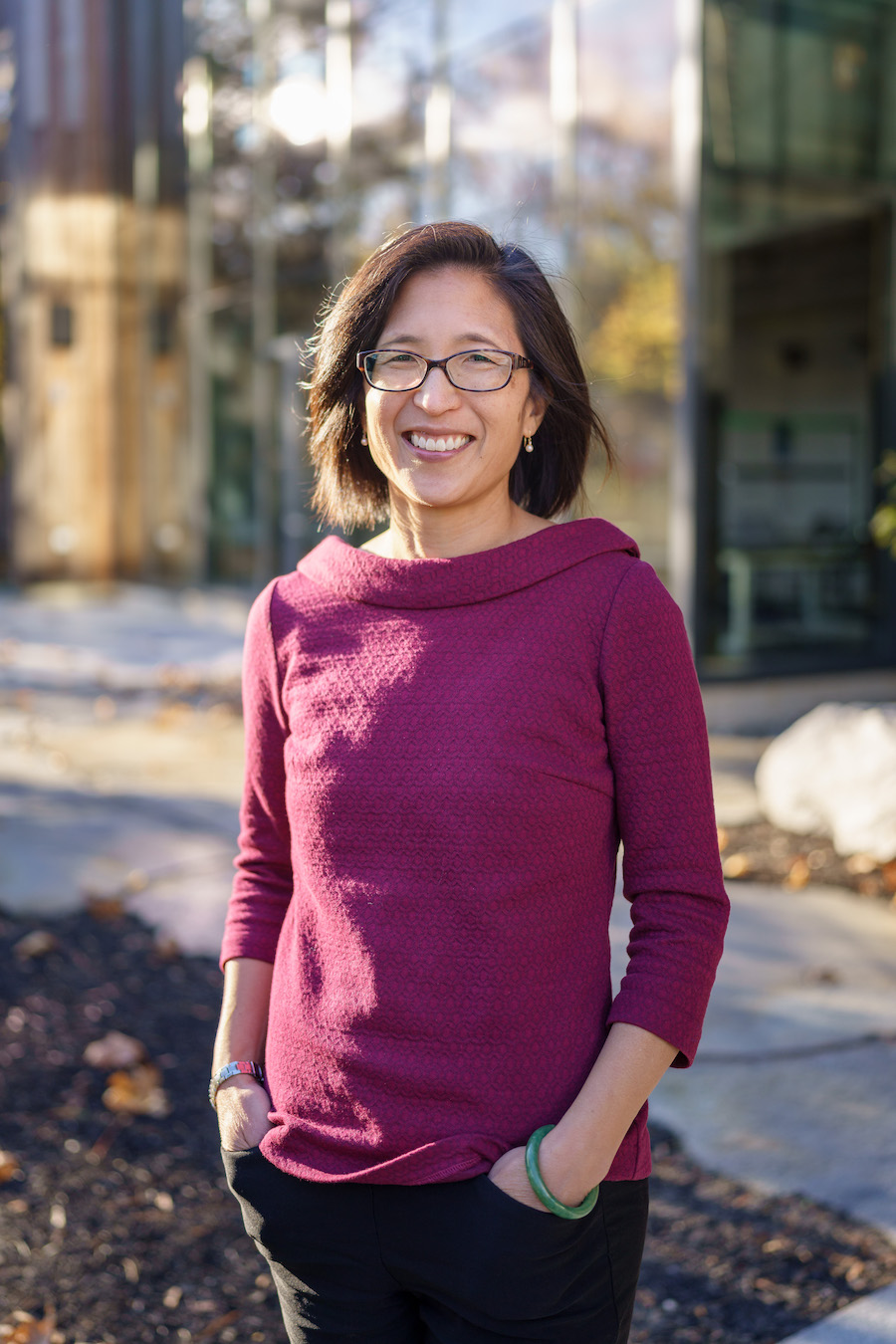
A Story of Environmental Justice and Health
Connie Chiang, director of the Environmental Studies program and professor of history and environmental studies
Within her scholarly area of twentieth-century US history, Chiang focuses on environmental history, the American West, and Asian American history. Her most recent book, Nature Behind Barbed Wire: An Environmental History of the Japanese American Incarceration, examines how the environment shaped the experience of over 110,000 people of Japanese descent who were interned during World War II, some for longer than three years.
She is now researching the aftermath of this detention. For many years, Japanese Americans waged a national campaign for redress. Their efforts culminated at last with President Ronald Reagan signing The Civil Liberties Act in 1988 to give survivors $20,000 in reparations and a formal apology.
After reading hundreds of pages of Congressional testimony, Chiang noticed many former detainees or their surviving family members described the ordeal not just as a violation of civil rights, but also as a violation of their health.
“Many talked about the trauma of being uprooted from their homes and put in a harsh and desolate environment with extremes of temperatures and a variety of weather conditions, including dust storms,” Chiang said. With scant protection from the elements, they were exposed to dust, mold, and fungi that caused chronic, and sometimes fatal, respiratory problems.
In this way, their fight for redress, Chiang said, also became a fight for environmental justice.
Read a transcript of Chiang's 2022 Convocation address, in which she speaks about the ES program, and a recent Q&A with her about Nature Behind Barbed Wire.
- Environment and Culture in North American History
- The Beach: Nature and Culture at the Edge
- History of the American West
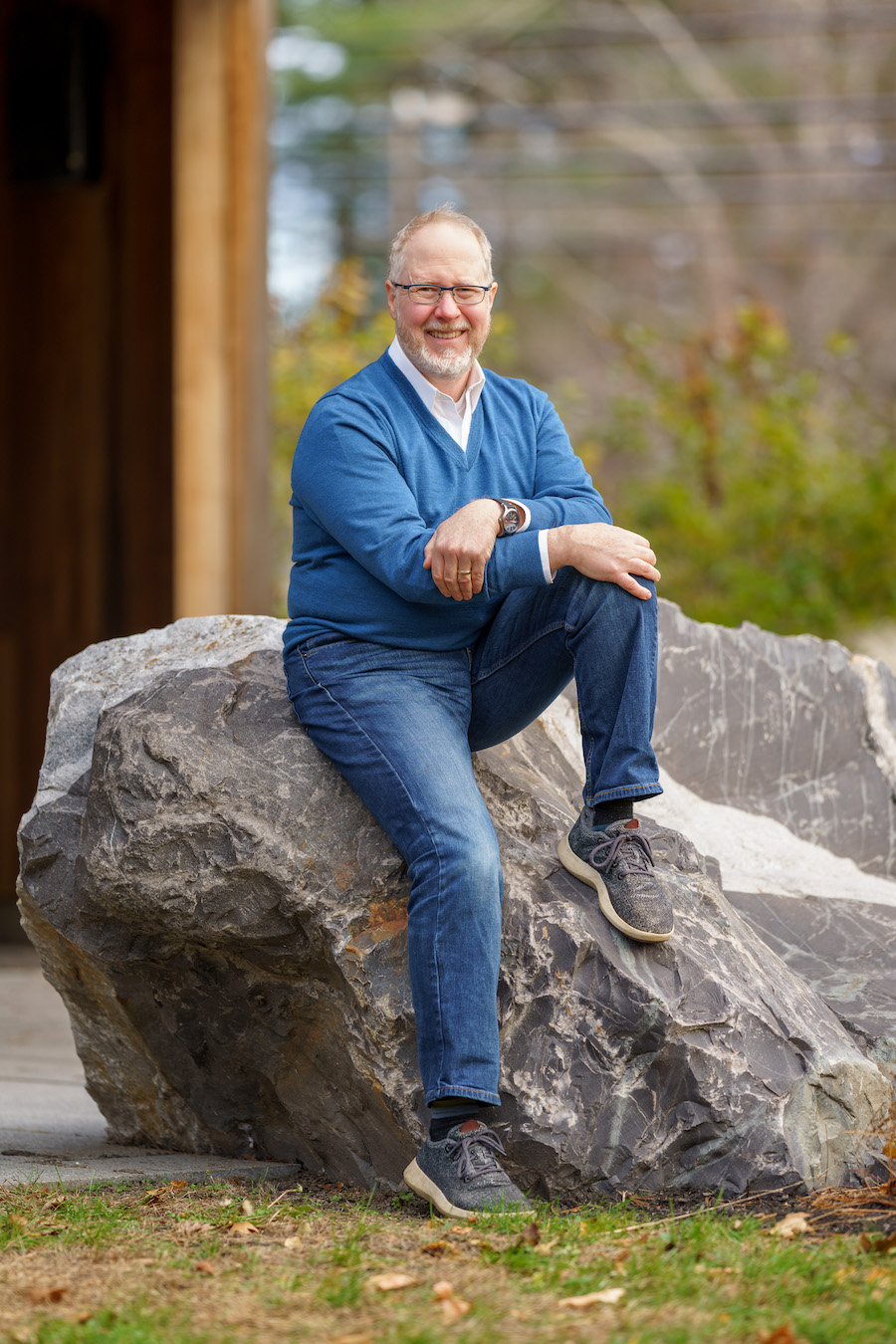
A Historian's Perspective on Public Health and Environmental Justice
Matthew Klingle, associate professor of history and environmental studies
Klingle is studying how environmental factors and patterns of social inequality contribute to health problems across sections of the US population.
His current book project, Sweet Blood: Diabetes and the Nature of Modern Health, under contract with Yale University Press, explores the emergence of chronic diseases like diabetes, which affects around 10 percent of Americans and hits minority and poverty-stricken communities the hardest.
Klingle’s research examines how today’s diabetes epidemic stems from our changing relationships with nature and shifting patterns of social inequality from the late-nineteenth century to the present day. “Changes to our diets, increased chemical exposures, mounting environmental injustices—these are but a few of the possible environmental causes behind the diabetes epidemic,” he explained.
The disease and its complications raise many challenging questions, says Klingle: “Why are diabetics often held responsible for their illness through assumptions of gluttony or sloth, or are genetics and evolution to blame? Why has diabetes afflicted individuals and populations unequally, and what are the responsibilities of society to address those inequities? And how have science and technology framed social definitions of illness and inequality?”
Klingle argues that “diabetes and other chronic diseases can emerge from seemingly unlikely origins, such as the physiological effects of physical and emotional violence that can affect the neuroendocrine system to produce illness, or the biological effects of structural racism that can span generations through persistent changes to cells and tissues.” His project expands the term “environment” to encompass “subjects not typically seen as ‘environmental’ by humanities and biomedical scholars alike."
- Consumed: The Nature of Consumerism
- Environment and Culture in North American History
- The Nature of Health in the United States and the World
“Ecologists study how organisms interact with one another and their environments—or really, with humans, because humans so dramatically alter every environment they touch. I’m trying to understand how human impacts are affecting the diversity of species, the abundance or absence of species, and if species are adapting or evolving in response to human impacts.”
—Mary Rogalski
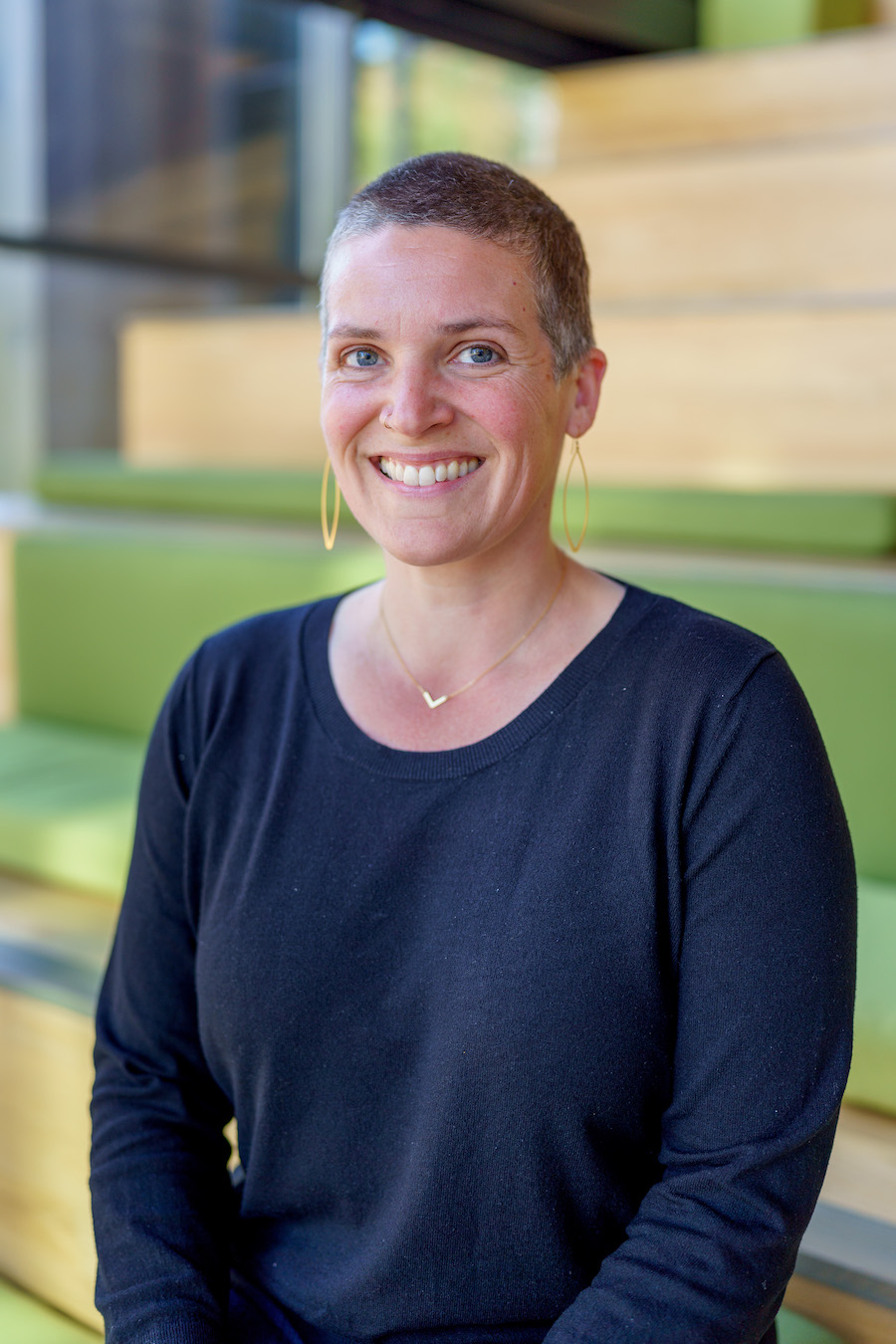
Ecological Impacts, or A Story about How the Non-human World is Responding to a Quickly Changing Environment
Mary Rogalski, assistant professor of biology and environmental studiesDuring her explorations of Maine’s freshwater systems, Rogalski discovered a pond different from most others. Yet, standing on its shore, Sewell Pond in Arrowsic appears to be a typical pond in Maine—its surface is dark; its shallow waters are clear. You would never know it contained an ecological mystery.
As an ecologist who studies pollution’s impacts and how organisms are adapting to—or functioning in response to—human activities, Rogalski is drawn to aquatic systems because they can reveal what is happening in the larger landscape. “Freshwater systems are a way to check up on the health of a broader system,” she said.
To understand what’s happening in Sewell Pond and other lakes and ponds, Rogalski studies a common freshwater organism at the base of the food web. Tiny Daphnia, consumed by fish and some invertebrates, grazes on algae, helping to keep lakes pristine and habitable. One of her research questions is whether Daphnia are adapting to pollutants in the environment, such as industrial heavy metals like cadmium and copper, or salts—both those that are naturally occurring and the salt added to roads to treat for ice and snow.
Though she has found that road salt has a minimal impact on Sewell Pond, Rogalski was surprised to find relatively high levels of salt in its waters. The amount also fluctuated, most likely due to the pond's outflow to a brackish stream. After heavy rains, the flooded stream likely flows back into the pond waters.
But oddly, though high levels of salt are toxic to Daphnia, a crustacean, the samples she tested in Sewell’s post-storm salty waters weren’t harmed. If anything, they flourished.
This finding could have hopeful implications for coastal areas as the climate warms. “People are worried that saltwater intrusion could have a big negative impact with climate change, but in this pond, saltwater is increasing dramatically. And so far, it is not hurting the Daphnia,” she said.
- Ecotoxicology: Pollution Impacts on Ecosystems and Human Health
- Prove It!: The Power of Data to Address Questions You Care About
- Ecology
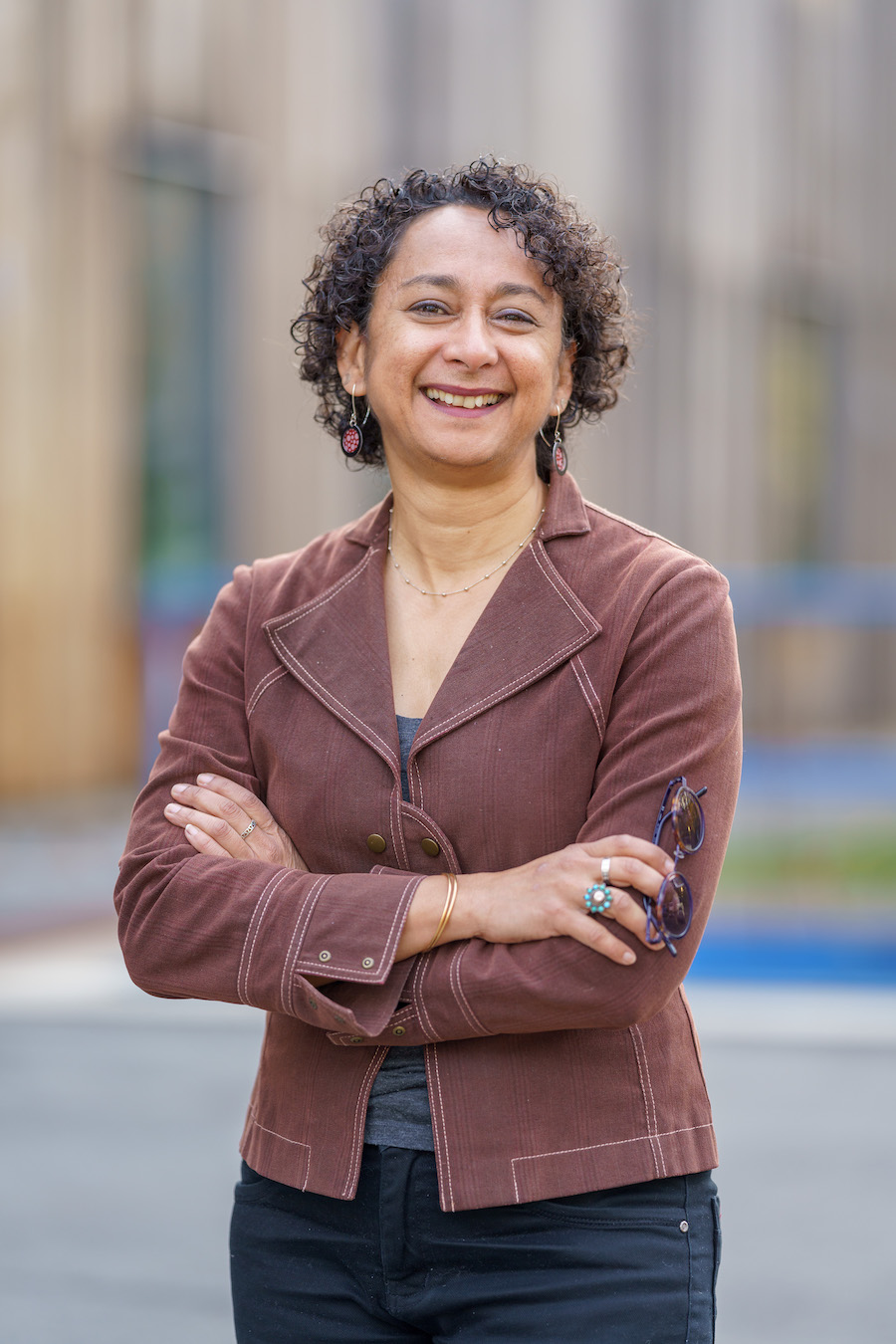
Chemical Impacts: "Tales of Attraction, Repulsion, and Fate"
Dharni Vasudevan, Stanley F. Druckenmiller Professor of Chemistry and Environmental Studies
As a chemistry scholar, Vasudevan examines the risk posed by chemicals that find their way into the natural environment. To do this, she explains, you have to study a chemical’s personality traits and behavior.
Chemicals are both life-sustaining and life-endangering. As humans, we willingly ingest a range of pharmaceuticals to keep us pain-free and in good health. The problem occurs when trace amounts of these and other chemicals get out into the environment, move around, and are reingested by humans and other organisms.
Why is this a problem? After all, we are used to taking much larger amounts of these chemicals in pharmaceutical products. It's a problem for at least two reasons, said Vasudevan. First, in the case of antibiotics, a small but constant amount of these chemicals being present means our microbes are constantly adapting so we develop resistance. Then we have to keep discovering new drugs to counteract this. Second, she added, there are harmful effects on the ecosystem. Downstream from a pharmaceutical plant, you can find fish with both male and female characteristics. For example, there are male bass in the Potomac River producing eggs.
Vasudevan’s research focuses on the fate of pharmaceuticals, pesticides, and relevant substructures in the environment to understand how these chemicals transfer between water and soil systems. This process, she said, involves learning the behavioral characteristics (the “personality traits” as she describes them) of individual chemicals. “This information in turn can help us understand and anticipate the risk posed by exposure to these chemicals,” she added.
Among the issues her environmental courses explore “is the connection of chemical risk to systemic factors that lead to environmental injustice: how and why disproportionate chemical risk is placed on lower-income communities and communities of color,” she said.
Watch Vasudevan's October 18, 2022, talk "Chemicals in the Environment: Tales of Attraction, Repulsion, and Fate."
- Environmental Fate of Organic Chemicals
- Environmental Chemistry
- Perspectives in Environmental Science
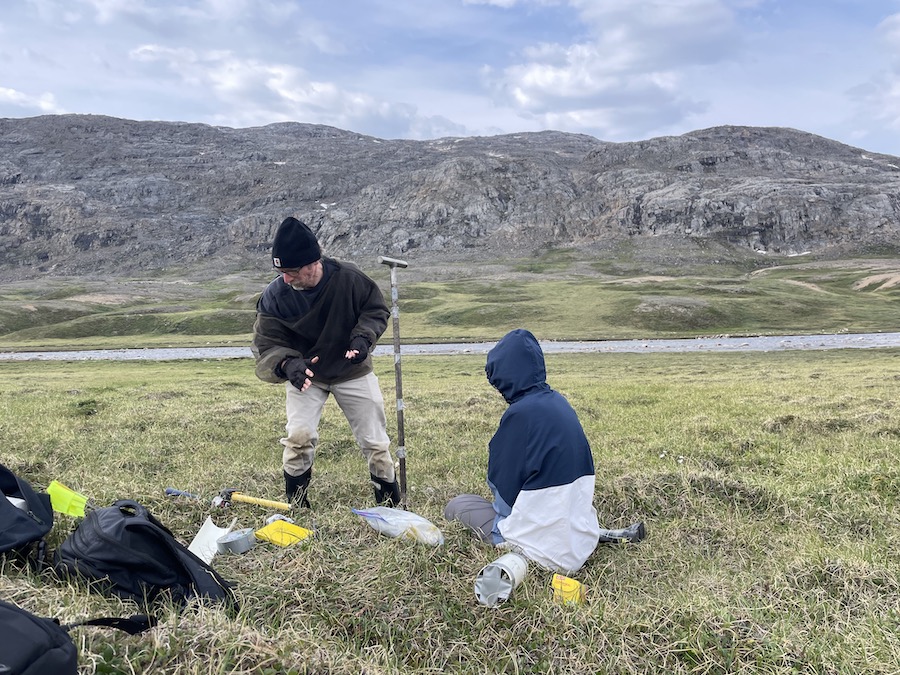
Climate Impacts: A Story of Peatlands in Balance
Phil Camill, Rusack Professor of Environmental Studies and Earth and Oceanographic Science
The main driver behind Phil Camill’s research is his quest to understand how the changing climate impacts Earth's natural systems, both today and over the geological past.
His research encompasses all the “spheres”—the biosphere, atmosphere, hydrosphere, cryosphere, and lithosphere—to better grasp how landscapes are responding to warming, and, as they change, how they are contributing to or slowing climate change.
For the past thirty years, he has focused on investigating the vast northern ecosystems in boreal and Arctic regions, where carbon dynamics and vegetation patterns are changing dramatically.
To gather data, he and his students have traveled to the Arctic to study its peatlands, which store carbon in the form of decayed vegetation. Yet, as the climate warms, regions of the high Arctic—for millennia a cold and inhospitable region—are becoming wetter and warmer, causing shifts in the plant life.
Camill is studying this phenomenon closely, because as the land is taken over by mosses and other plants, it will absorb and store more of the excess carbon dioxide produced by human activity.
But at the same time, more southern regions are drying up and getting hotter, which hastens decomposition and burning, and releases more carbon into the atmosphere.
"As things green up, these northern regions can soak up carbon from the atmosphere," Camill said. But "there's this question, what is the balance? Is the higher Arctic going to green more than the lower Arctic and boreal region will brown?"
- Earth Climate History
- Biogeochemistry: An Analysis of Global Change
- Perspectives in Environmental Science
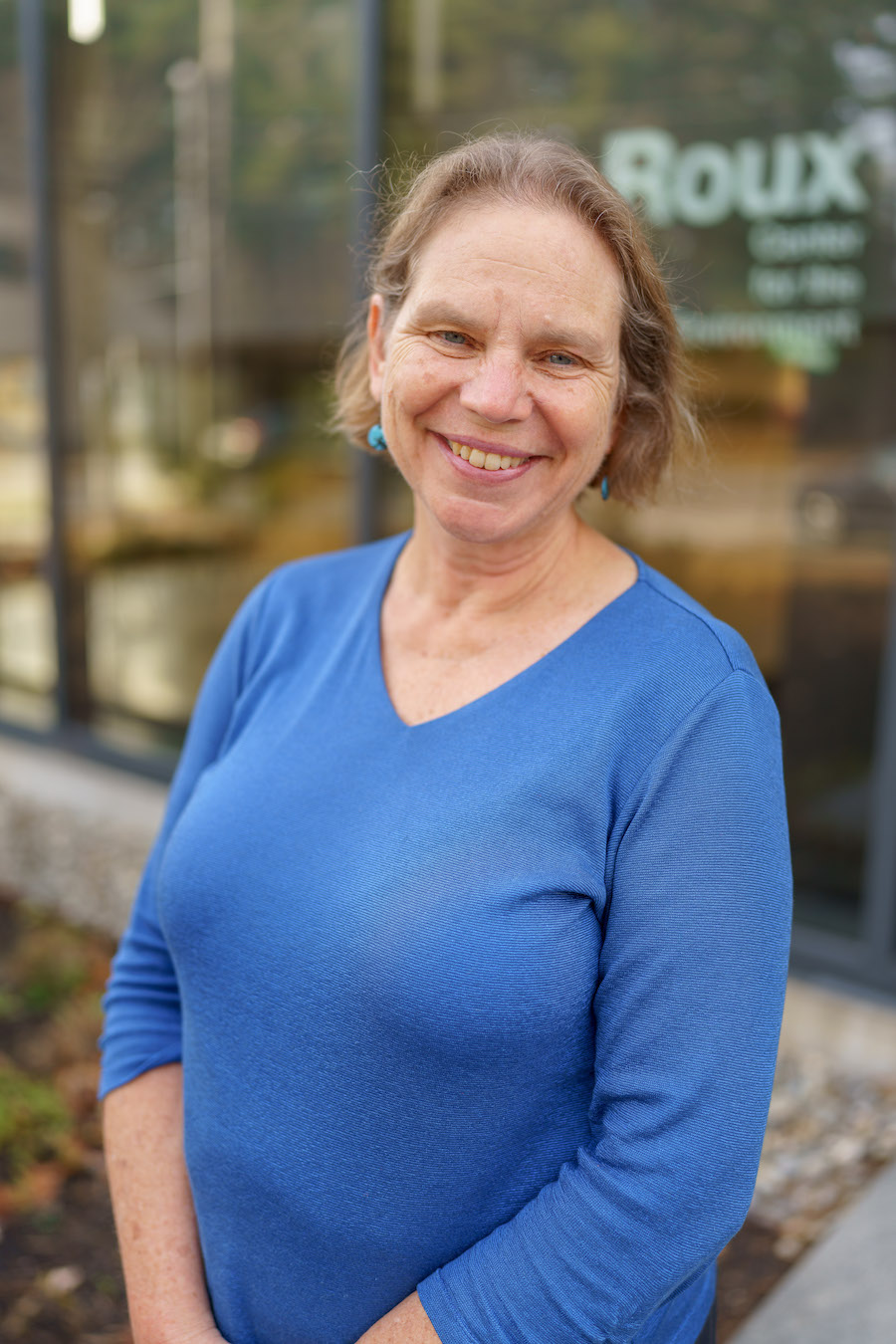
Climate Resilience, A Maine Story
Eileen Sylvan Johnson, senior lecturer in environmental studies and program manager
In collaboration with nonprofits, academics, and the public sector, Johnson studies how communities, especially rural and coastal ones in Maine, can adapt to a rapidly changing environment. Her work is directed at the smaller towns that tend to be underrepresented in the literature on climate change.
Though addressing physical vulnerabilities is critical for climate adaptation—such as protecting the streets or buildings most at risk for flooding and sea surges—Johnson’s research focuses more on what she calls “social vulnerabilities.” She seeks to address the needs of more at-risk community members, such as the elderly or those living on a low income, who often face a disproportionate burden of the impacts of climate change.
With an expertise in geographic information system (GIS) mapping and spatial analysis, Johnson collects, analyzes, and presents data to help communities to show them who, for example, may be stranded during storm events and lose access to emergency services.
"My research examines ways to strengthen social infrastructure and social services as a way to mitigate the impacts of climate change on residents," she said. “Social capital is really important, and in rural communities it can be particularly important.”
ES students have also collaborated with Johnson on a range of community-based projects centered on studying community resilience. Their work emphases the ways in which planning processes can engage community members in order to “plan with” rather than “plan for” them.
Findings from this research can help townspeople make better financial and logistical decisions. “I think a lot about resiliency and the processes of climate change and adaptation, and how communities can plan in an equitable and just way,” she said.
Read more about Johnson's work with Maine communities here and here.
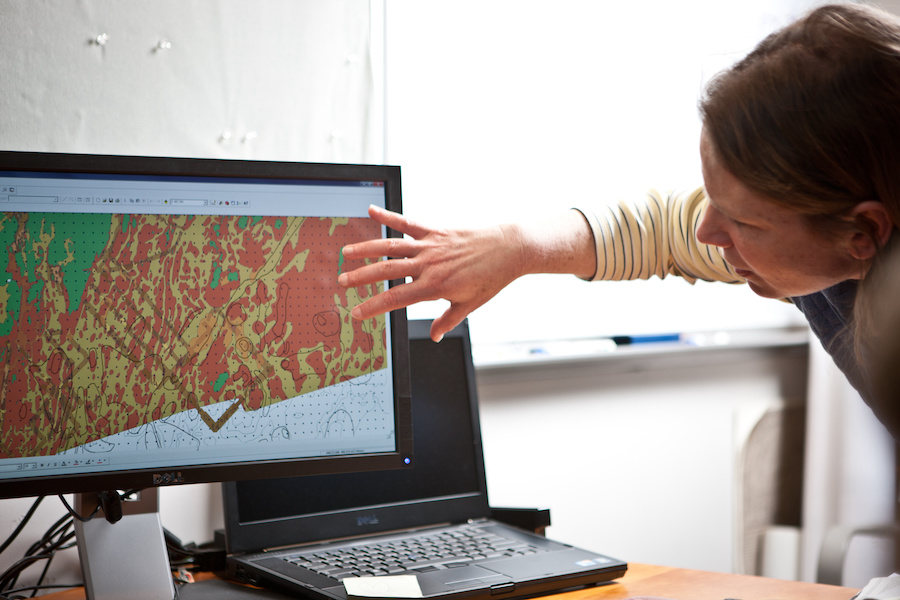
- Building Resilient Communities
- GIS and Remote Sensing: Understanding Place
- The Nature of Data: Introduction to Environmental Analysis
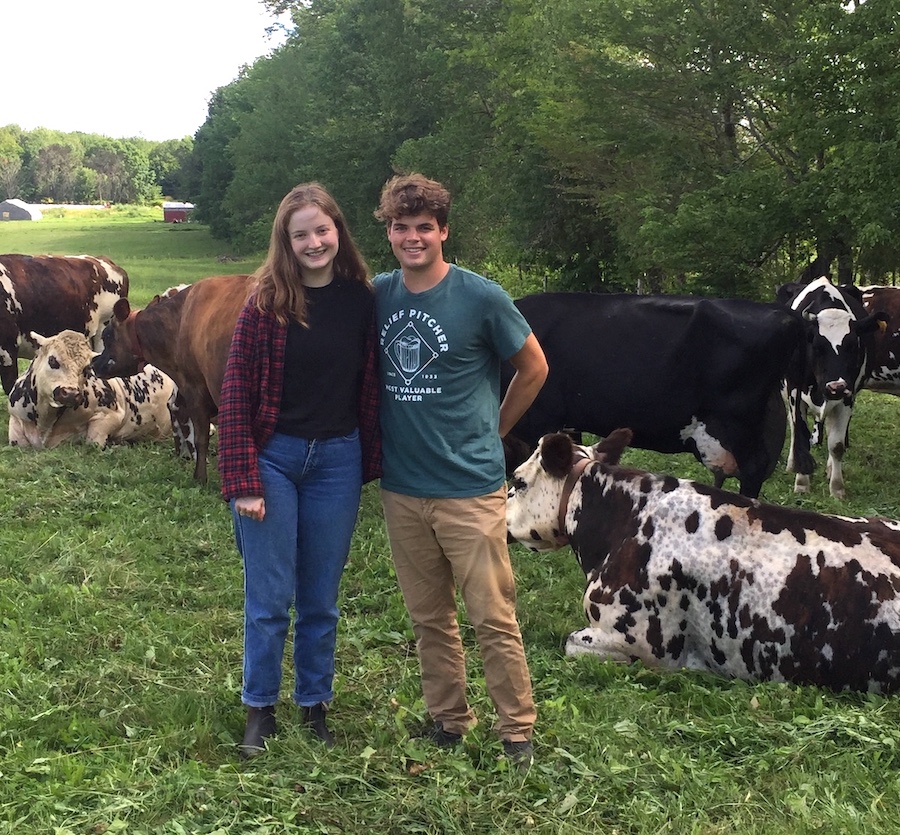 In 2018, Shana Starobin and Eileen Sylvan Johnson founded the CoLab to teach ES student researchers to use social science fieldwork methods. This way, students investigate not only the “biological and biophysical dimensions of studying environmental phenomena, but also how humans interact in those systems,” Starobin said.
In 2018, Shana Starobin and Eileen Sylvan Johnson founded the CoLab to teach ES student researchers to use social science fieldwork methods. This way, students investigate not only the “biological and biophysical dimensions of studying environmental phenomena, but also how humans interact in those systems,” Starobin said.
CoLab students are encouraged to travel off campus to engage people around Maine, including farmers and fishers, asking questions about these interactions. “We know people like farmers have knowledge, but their knowledge and expertise are not often included in deliberative decision-making over policies that will affect them,” Starobin said. “This is the core of the work we do: centering rural livelihoods.”
The CoLab serves as a direct link between Bowdoin and Maine, bringing people together to address environmental problems. "The establishment of the CoLab has been instrumental in facilitating collaborations, not only among our students but also with outside community partners," Johnson said.
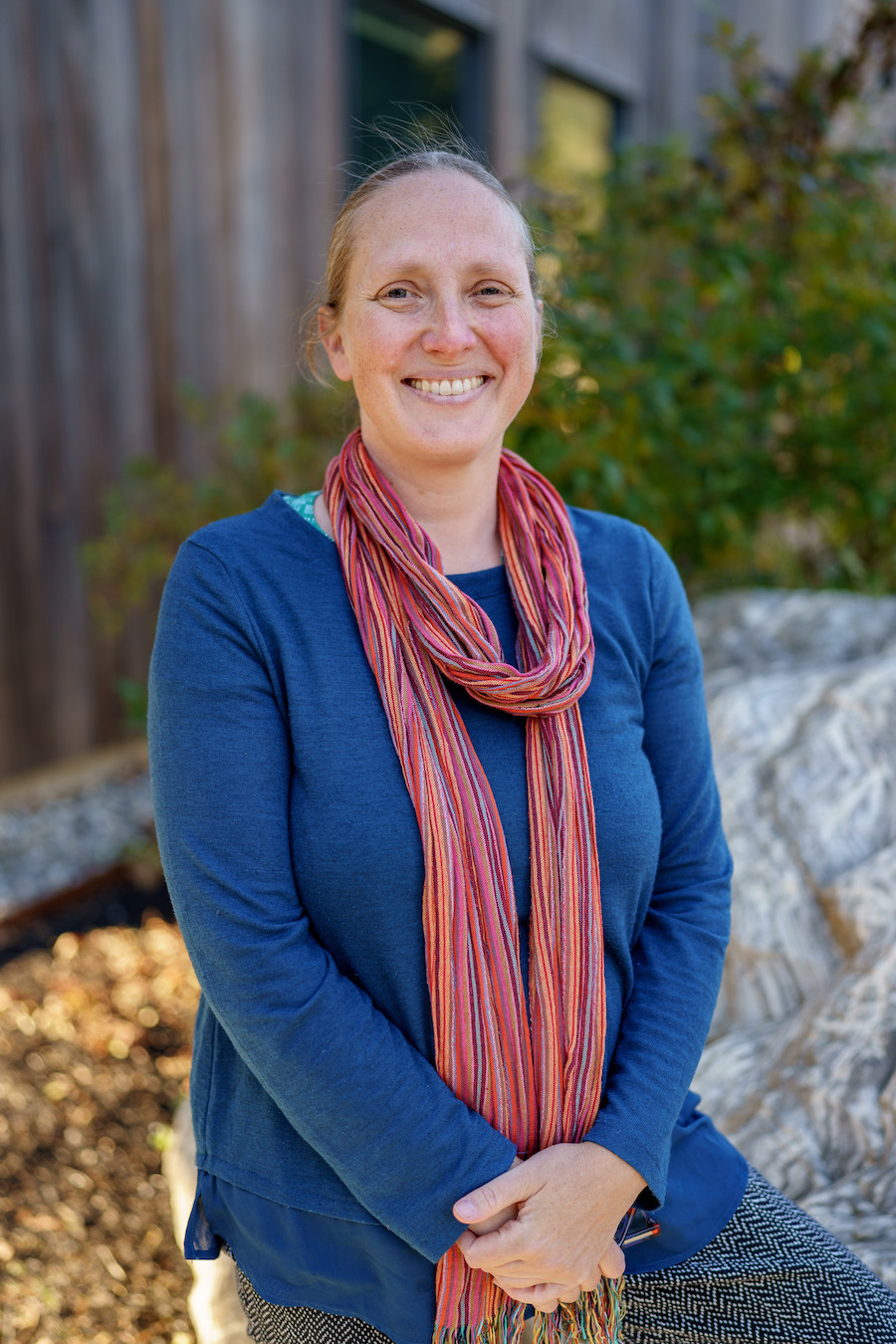
Food Systems and Stories of Food Producers
Shana Starobin, assistant professor of environmental studies and government
For the past fifteen years, Starobin has visited farms from Nicaragua to Maine, from large-scale agricultural businesses to small family farms. Despite the differences among them, Starobin has found commonalities among everyone who grows food in today’s interconnected world.
“In a globalized world, commodity producers or people producing for subsistence are all subject to global rules, even if they don’t have direct interaction with national or international markets,” she said.
Her book in progress, (Un)certified: Trust, Credibility, and Community-driven Innovation in Agri-food Government, is innovative in a couple of ways. In addition to Starobin's methods of collecting data—immersive fieldwork and observation—the book evaluates farms, like homesteaders in Maine, subsistence farms in Nicaragua, and commodity growers in Mexico, as a group rather than looking at them based on nationality.
Starobin’s findings are relevant to the governance of global supply chains. In her environmental studies classes, she also digs into questions of how to make sense of governing global commodities, especially if political and business leaders, and consumers, care about environmental protections or human rights.
- Food, Environment, and Development
- Private Actors, Public Goods: Corporate Social Responsibility (CSR) in Comparative Perspective
- Talking to Farmers and Fishermen: Social Science Field Methods for Environmental Policy Research
“The built environment is the landscape humans have constructed to mediate between us and the natural world, to protect us from it and engage us with it.”
—Jill Pearlman
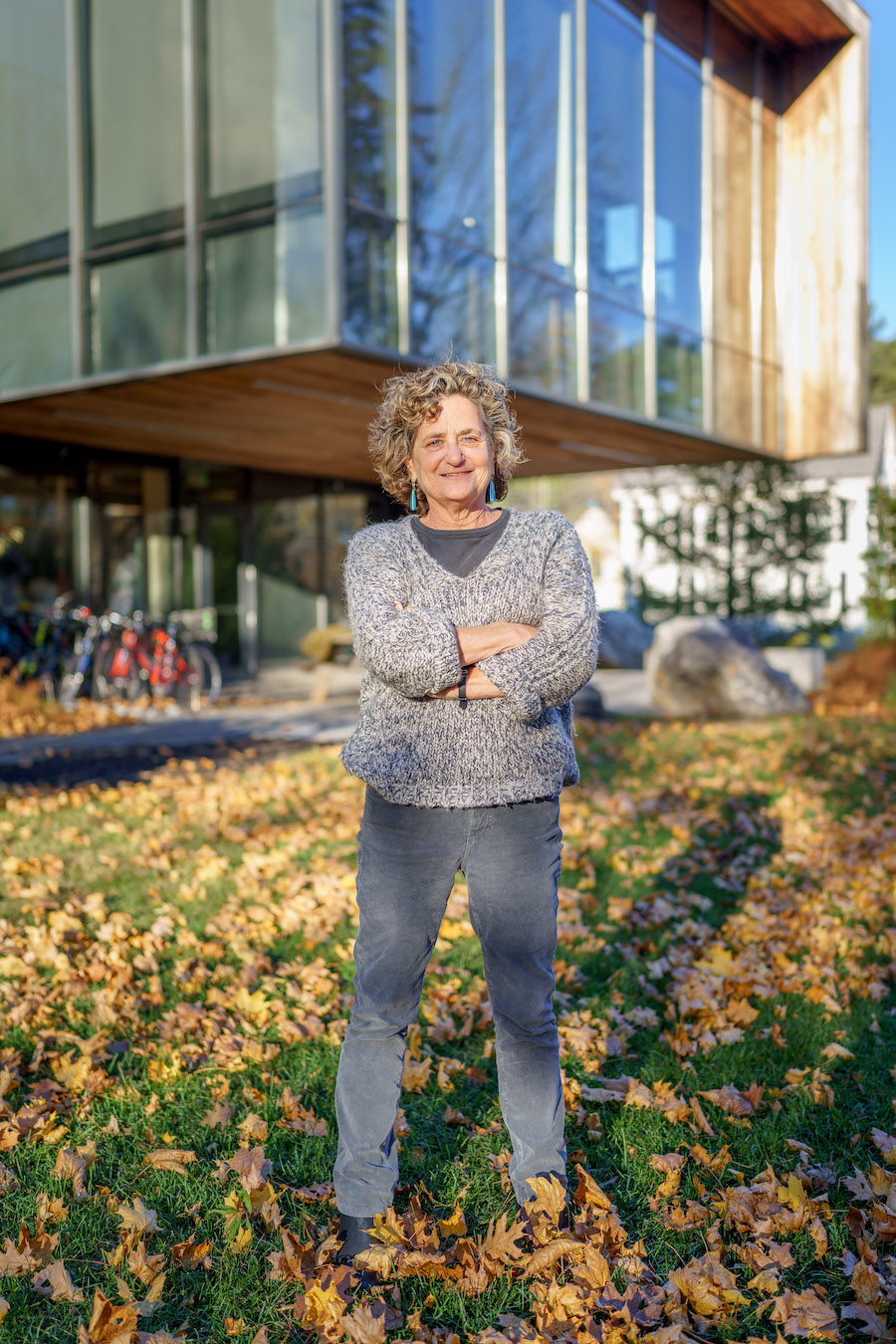
Of Our Own Making: The Built Environment
Jill Pearlman, senior lecturer in environmental studies
An essential part of environmental studies, says Pearlman, is an acknowledgment and understanding of the built environment—the physical places and spaces that humans have made—those in which we live, work, recreate, and congregate. They are places that connect us and allow us freedom of movement, from buildings to streets and roads, waterfronts, parks, bridges, and other infrastructure, to public and commercial spaces.
"I don't know how one would sever the study of the natural environment from the human-made environment," Pearlman said. "In my courses in general I focus on the history of the urban built environment and do so by exploring the forces that have helped shape cities' everchanging forms."
These forces include—to name a few—money, industrialization, public health, natural disasters, politics, policy, power, law, aesthetic theories, and urban planning ideals. Pearlman’s courses focus in particular on the nineteenth and twentieth centuries.
“One of the central issues that has shaped the physical world we live in is the fact that people with money and power have gone to great extremes to segregate themselves from people unlike themselves—those they think are inferior in terms of race, social class, ethnic or religious group,” Pearlman said. “Governments and laws have played a huge part in helping the segregators in this effort.”
- The Nature and Urbanism of Frank Lloyd Wright
- City, Anti-City, Utopia: Building Urban America
- The City Since 1960